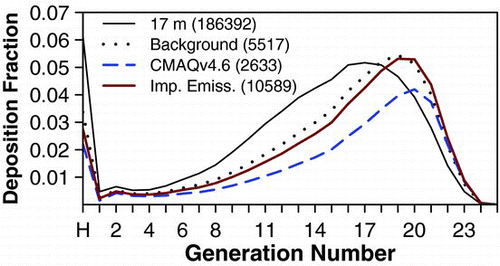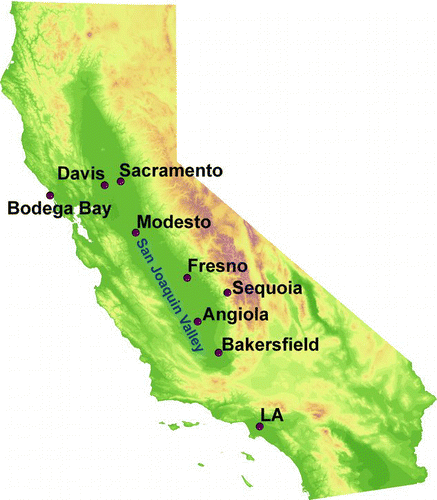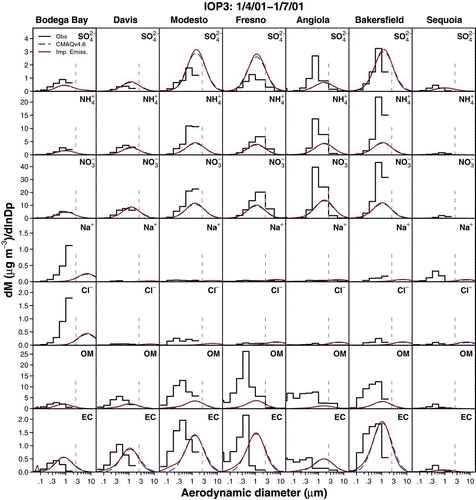Figures & data
TABLE 1 Summary of Aitken and accumulation mode parameters used for mapping particle emissions to lognormal distributions. Coarse mode parameters not changed in this study
FIG. 2 Average observed and modeled mass size distributions for CRPAQS Intensive Operating Period 1 (IOP1). See upper-left FIG. for legend (Obs: Observations; Imp. Emiss.: Improved Emission scenario of Elleman and Covert, 2010). Dashed vertical line indicates aerodynamic diameter of 2.5 μm.
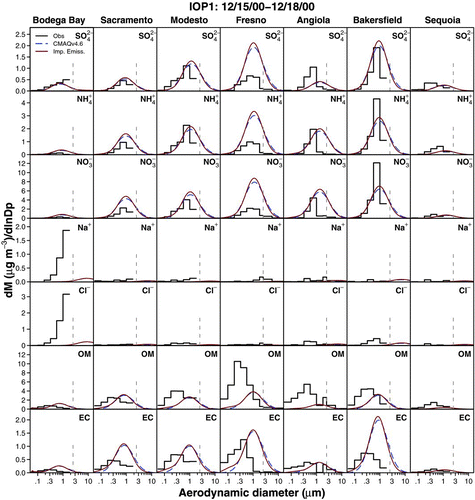
TABLE 2 Observed and modeled PM2.5 (Angiola and Fresno) or PM1.8 (other sites) associated with and 3 (μg m−3)
FIG. 4 Time series of observed and modeled number concentration (number cm–3) for particles with diameter > 9 nm at Fresno for 12/8/00–1/31/01.

FIG. 5 Average diurnal number-concentration (number cm−3) profile at Fresno associated with time series in .
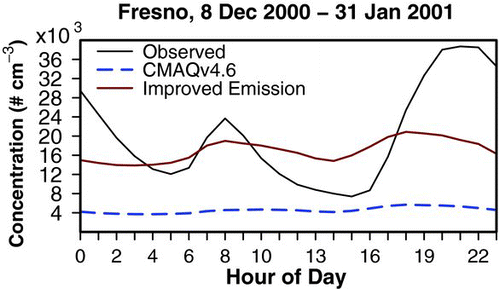
FIG. 6 Average observed and modeled number size distributions at Fresno for 12/8/00–1/31/01 for (A) 7:00–8:00 PST, (B) 20:00–21:00 PST, and (C) all hours.
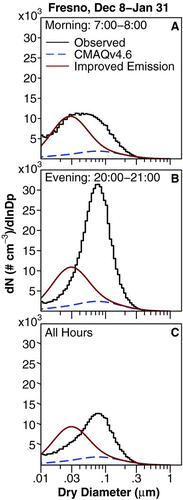
TABLE 3 Average peak-concentration diameter (nm) for particle number size distributions. Both wet and dry diameters are given for modeled distributions
FIG. 7 Average observed and modeled number size distributions at Modesto (1/4/01–1/7/01) and Bakersfield (1/4/01–1/5/01).
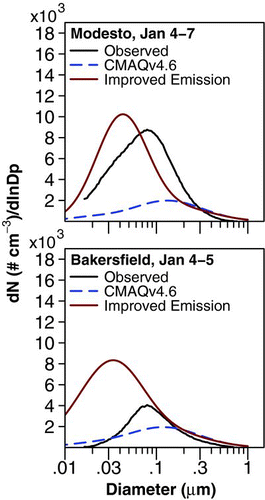
FIG. 8 Average modeled deposition fraction in the 5-lobe symmetric lung geometry as a function of airway generation number for average particle number size distributions in Figures and 7. Average particle number concentration (number cm–3) is given in parenthesis in the legend for the following diameter ranges (nm): 5–1000 for model, 9–392 for observations at Fresno, and 16–764 for observations at Modesto and Bakersfield. “H” indicates extrathoracic region; generation 1 is trachea.

FIG. 9 Observed (CitationZhu et al. 2004) and modeled particle number size distributions near Highway 710, LA in January. Observations are from 2002; model results are from 2001. Numbered labels indicate distance from roadway in meters, Bkgrd corresponds to background location, and Imp. Emiss. is Improved Emission scenario of CitationElleman and Covert (2010).

FIG. 10 Average modeled deposition fraction in the 5-lobe symmetric lung geometry as a function of airway generation number for particle number size distributions in FIG. 9. Average particle number concentration (number cm–3) is given in parenthesis in the legend for the following diameter ranges (nm): 5–1000 for model, 6–225 for observations. “H” indicates extrathoracic region; generation 1 is trachea.
